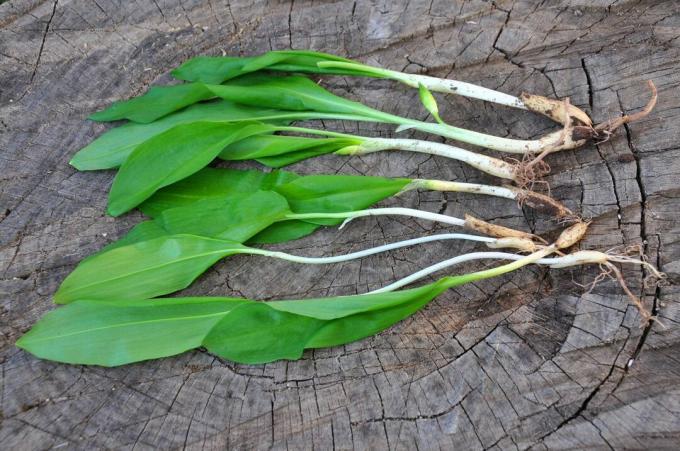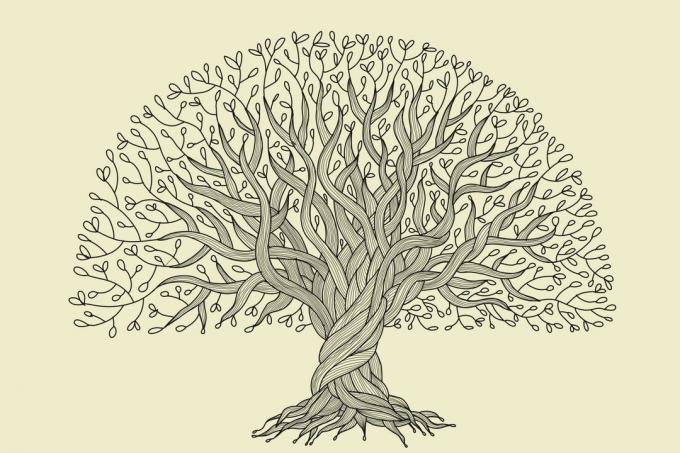Plant species and plant variety sound like interchangeable terms, but do they really mean the same thing? The taxonomy of plants brings light into the darkness.

The difference between plant species and plant variety is not always clear. In the following sections, we will explore the meaning of "species" and "variety".
contents
- What is a plant species?
- What is a plant variety?
- What is the difference between species and varieties?
What is a plant species?
In order to understand what a plant species is, one should first clarify what the taxonomy of plants means. Taxonomy means nothing other than "order" or "system". The taxonomy of plants or animals tries to classify living beings in a system - according to their relationship. You can think of it like a family tree. More distantly related are living beings of the same order. Closely related are living beings of the same genus or species. Living beings of one species are even very similar.
An example:
The winter hedge onion (Allium fistulosum) is a species of plant belonging to the genus Allium (Allium) belongs. This genus also includes other plant species, such as wild garlic (Allium ursinum), which looks very different from the winter hedge onion. Nevertheless, they are similar in some characteristics that make up the genus Allium. Both species have onions as outlasting organs in the soil, have a typical, onion-like odor and have simple leaves with parallel leaf veins. Also the garlic (Allium sativum) as another species of the genus, it has these characteristics. These leek plants are rather distantly related to orchids, although both belong to the order of the asparagus-like species (Asparagaceae). Although they still share some characteristics with them, they also have clear differences.

Tip: Imagine the systematics of plants as a tree. Plants on the same "leaf" (species) are closely related, plants on the same "branch" (genus) even more so closely, while all plants of the same "branch" (family, order) are very distantly related are.
But how are plants classified in the taxonomic system? Not all distinguishing features are obvious at first glance. You often need a magnifying glass or even a microscope to see the differences between different species. Science has established rules by which plants are classified into the same species or, for example, just the same genus: Plants of the same species are capable of producing fertile offspring, and they are very similar physically and genetically strong.

There is an incredibly large number of plant species on earth, and new ones are being discovered all the time. In addition, research is constantly gaining new insights - also thanks to genetic research, which recognizes relationships more reliably. Therefore, plants are always reclassified and renamed to better represent the relationships.
Tip: It can also happen that individuals of a species, which should actually be very similar, differ significantly. The dandelion, for example, looks visibly different in different regions of Germany. However, it is still clearly recognizable as a dandelion and the plants can be crossed with each other. The traits that are then formed are tied to the region. For example, the flowering time characteristic of a plant species may be different in southern regions than in northern regions where the flowers open later. Such a variation in the species is called a subspecies, section, or ecotype.

What is a plant variety?
Varieties only designate groups of plants that result from targeted breeding. Breeding is used especially for garden plants that should have the strongest possible colors or large flowers, as well as to increase yields and robustness in agriculture. Here, too, the characteristics of a variety must match. The term "variety" can be compared to the term "breed" in animal breeding. In the plant kingdom, a variety is always written in double quotation marks to identify it: 'variety'.

If new varieties are bred, they must be approved by the Federal Plant Variety Office. If the variety is to be protected, then you get a kind of patent on it. In contrast to the species name, which is botanically unambiguous, variety names are not always consistent. Varieties of ornamental plants can even arise without official approval and are then often named several times.
Of course, plant species that have been domesticated for a long time and that have been bred for many years are particularly diverse. Other plant species are little used and have no varieties at all, but are only available in the "wild species".
An example of varieties:
Let’s stay with the winter hedge onion as an example. In addition to the wild species Allium fistulosum there are different varieties, such as Alliumfistulosum ‘Freddy’, who is particularly pot-bellied, or Alliumfistulosum 'Rein Weisse', which is particularly hardy.
Tip: Good varieties can be found, for example, in the perennial sighting. For fruit varieties and a number of other crops, the Federal Plant Variety Office offers a database in which many variety properties can be looked up.

What is the difference between species and varieties?
Plants of a kind...
- Have a unique botanical name consisting of 2 parts: genus name and species name. Example: Malus sylvestris (Woodapple).
- Have the same external characteristics.
- Produce fertile offspring.
- Are genetically very similar.
- May include several naturally occurring subspecies, ecotypes or sections distinct from the ancestral form.
Example: The apples (penalty) are a genus of plants with up to 55 species. These include the cultivated apple (penalty x domestica), cherry apple (malus baccata) and crab apple (Malus sylvestris). The cultivated apple is a so-called hybrid of different species of the genus Malus and was created by human hands. hybrid seed is a major controversial issue in agriculture, about which you can read more in a related article.

Plant Varieties…
- Are created through targeted breeding by humans, for example line breeding or hybrid breeding.
- Can be registered and protected if certain requirements are met.
- Belong to the same species, but have different characteristics.
- Do not always have a clear, botanical name.
- Are marked with 2 quotation marks: ‘variety’.
Example: ‘Gala’, ‘Golden Delicious’ or ‘Elstar’ are varieties of the cultivated apple (penalty x domestica). So they belong to the same species, but the fruits differ in appearance and taste.

Now that you know the difference between a species and a variety, you may want to propagate a very specific type of vegetable. How to get seeds for next year, you will learn in our special article.
...and receive concentrated plant knowledge and inspiration directly in your e-mail inbox every Sunday!



